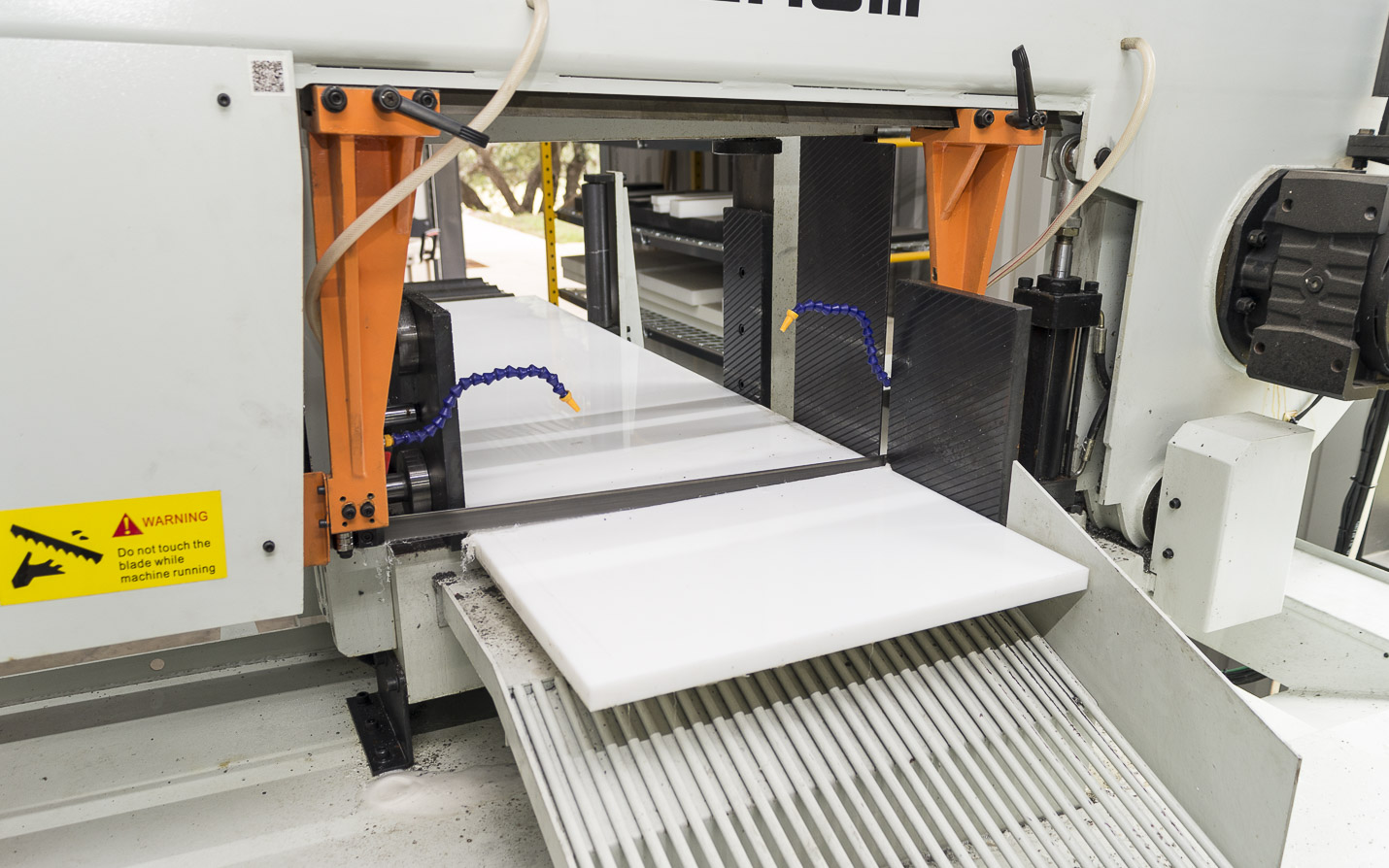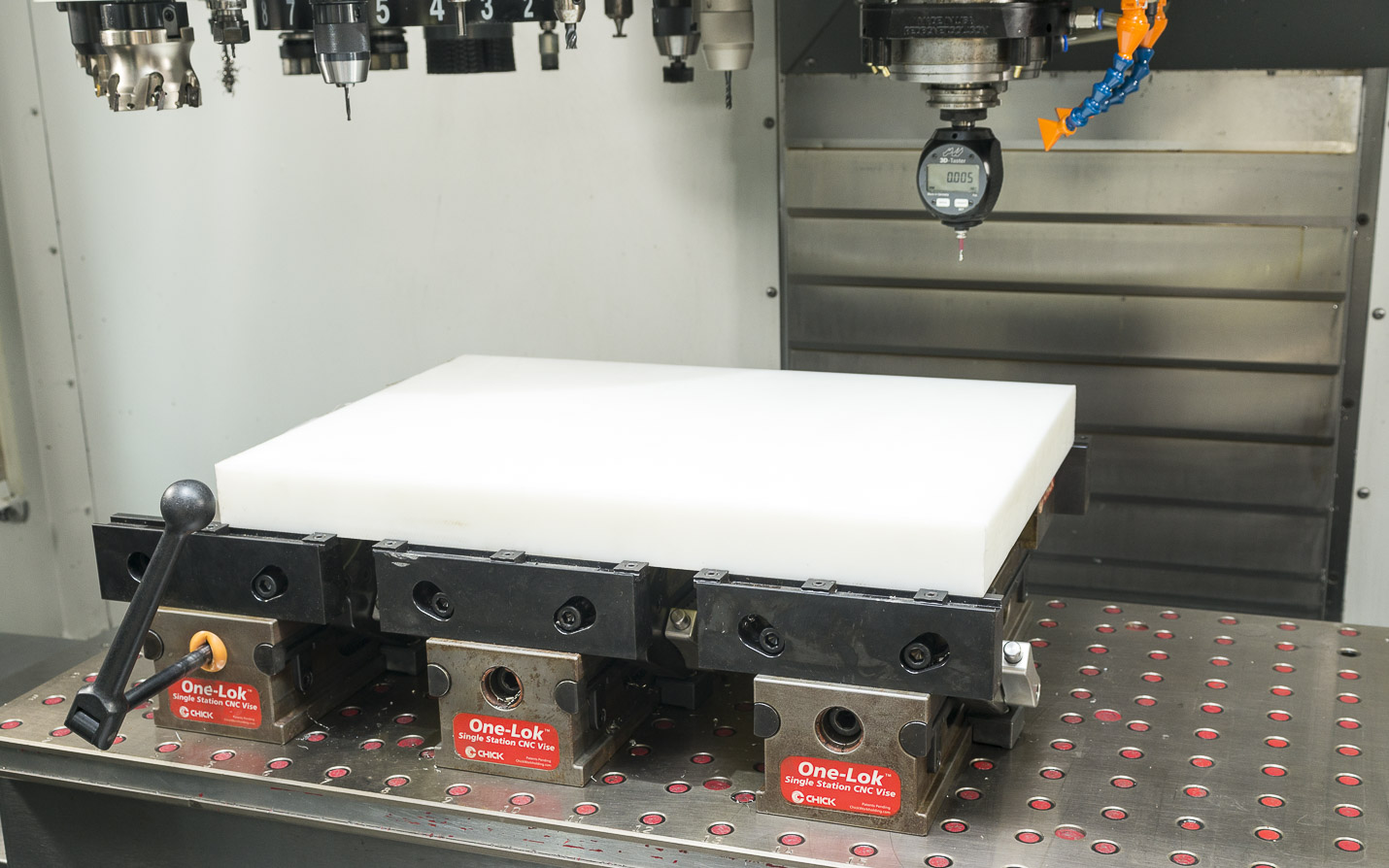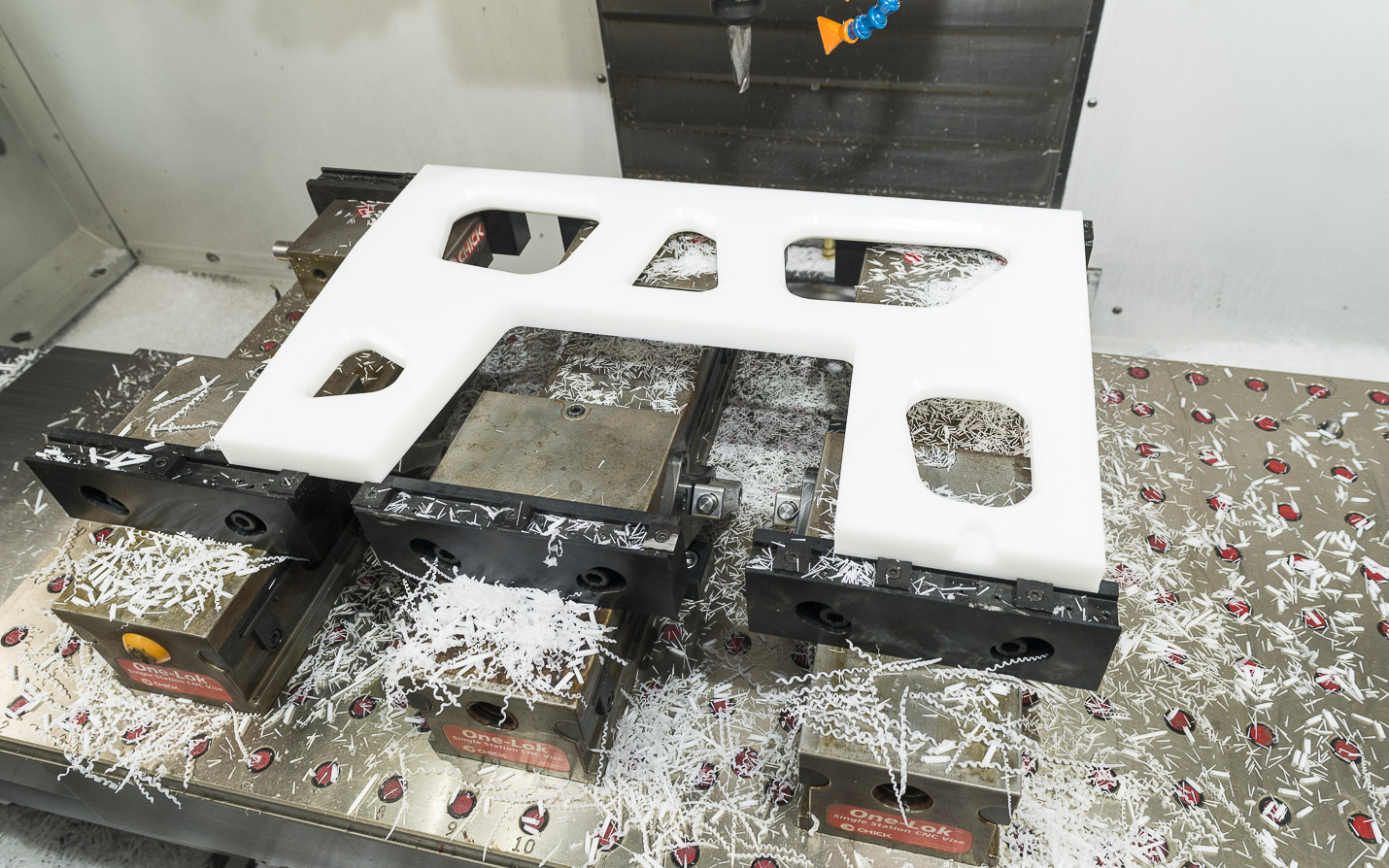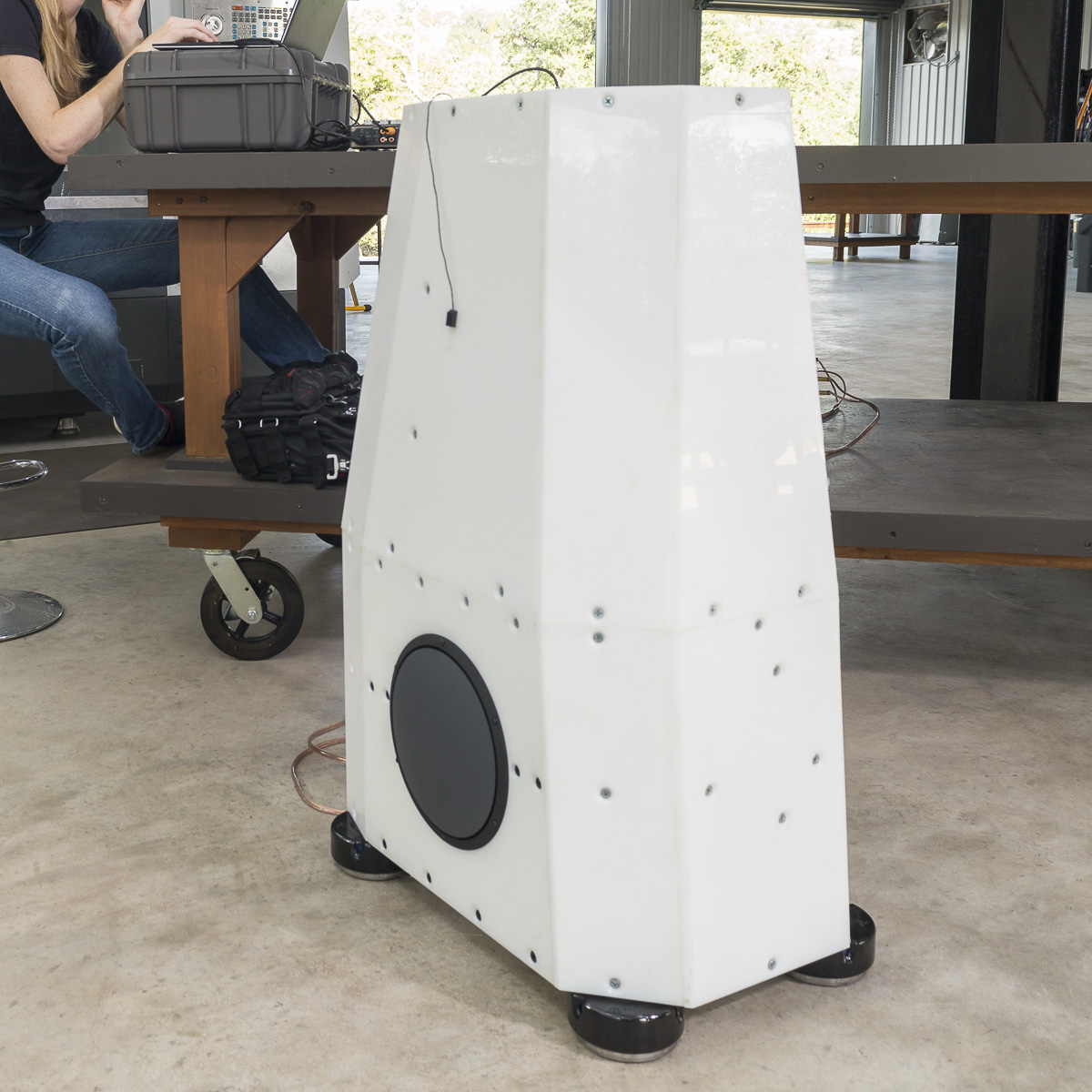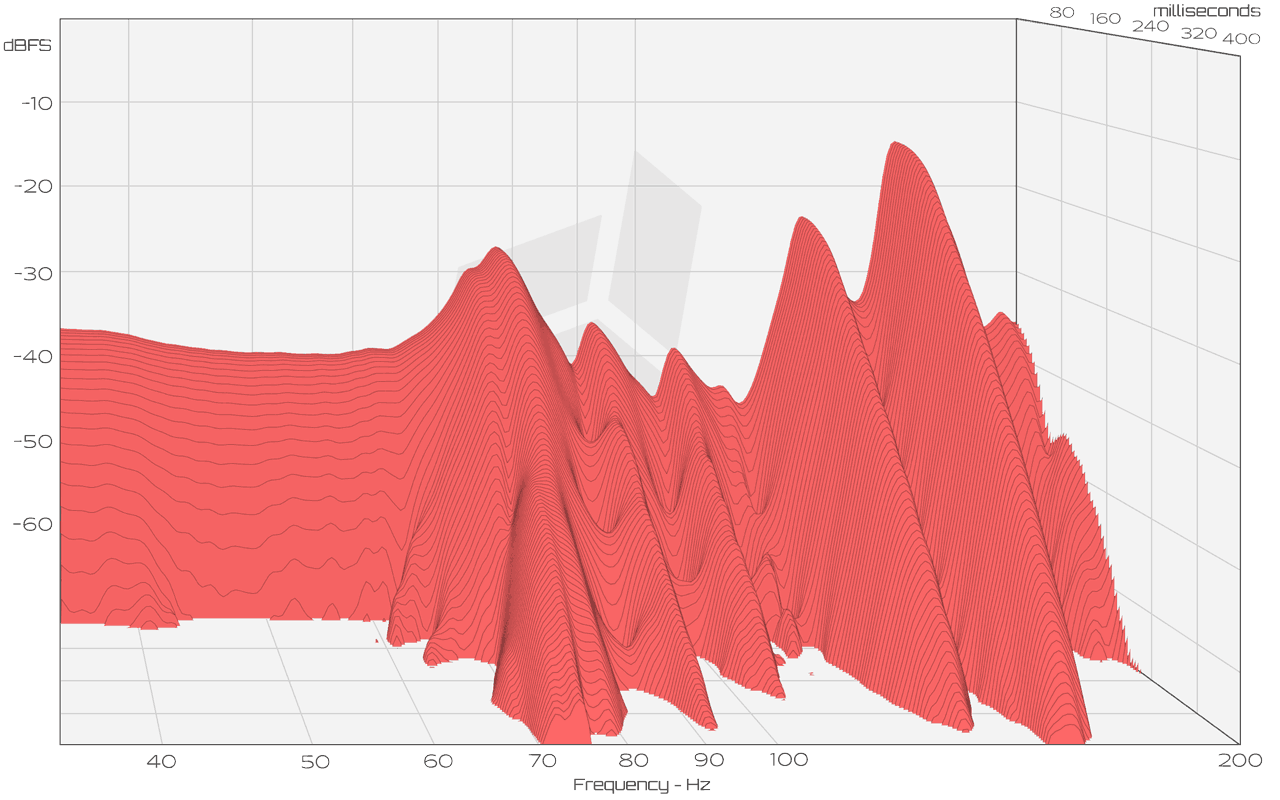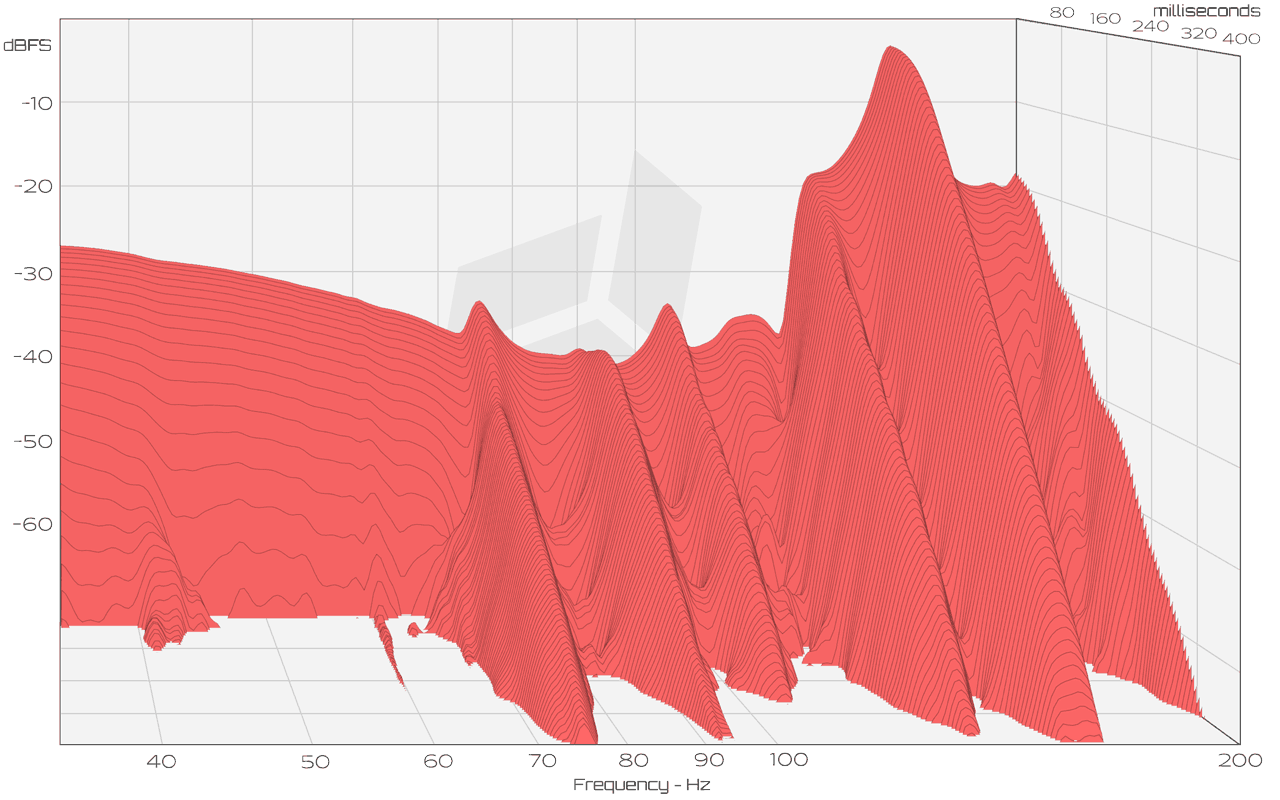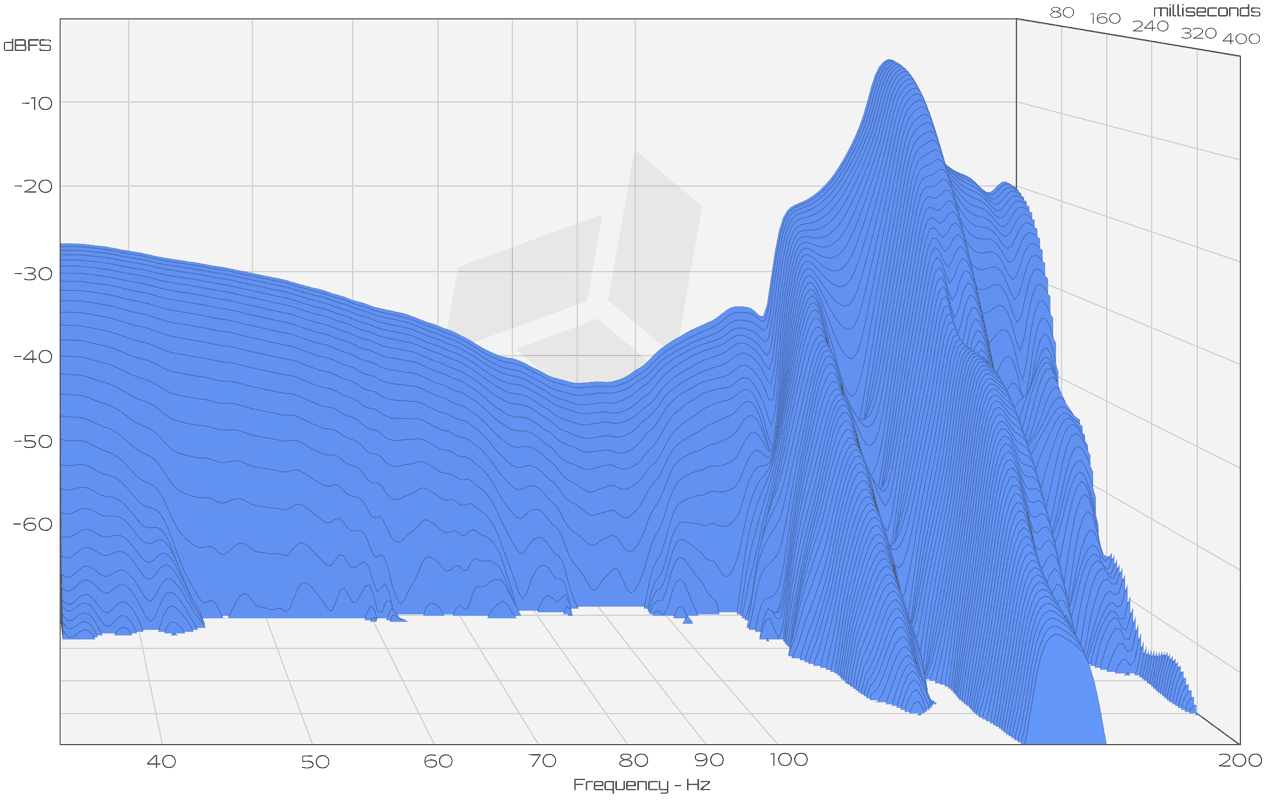Vibration Dissipation Using Carbide Base Footers
It is known that a loudspeaker enclosure contributes significantly to the total radiated sound at its lower resonance frequencies[1]. Even though the surface velocity of the panels of a loudspeaker is small, the panels radiate with an efficiency many times greater than that of the drivers. This is due to the large radiating area of the panels relative to the radiating area of the drivers. Sound radiating from the enclosure panels can impart audible distortion and should be mitigated. Damping the enclosure panels is one effective way to reduce the amplitude of resonances[2].
The goal of this experiment was to determine if placing Carbide Base footers under a loudspeaker could reduce low frequency resonances within panels of the loudspeaker enclosure. The reduction in panel resonances would help quantify the improvement in vibration dissipation provided by the footers. This improvement would be compared to the base case of a loudspeaker enclosure sitting on steel floor spikes on a concrete floor.


